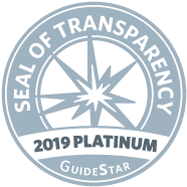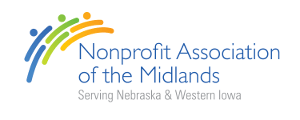A vitamin vs. a pain pill: Why do we wait for kids to fall behind?
In the late 1800s, Joseph Malins, an English activist, wrote a poem about a cliff, a fence and an ambulance. The gist: There’s a cliff that’s very pleasant to walk on, so many people in the town nearby venture close to its edge. Some slip and fall into the valley below, and the town decides something has to be done.
They become divided when they must decide whether to build a fence or keep an ambulance down in the valley. The majority claim it’s most important to send an ambulance to care for those who are injured. A fence still may not stop them from slipping or falling, they argue, but an ambulance will ensure their injuries can be mended.
The last segment goes like this:
Better guide well the young than reclaim them when old, For the voice of true wisdom is calling: “To rescue the fallen is good, but ’tis best To prevent other people from falling.” Better close up the source of temptation and crime Than deliver from dungeon or galley; Better put a strong fence round the top of the cliff. Than an ambulance down in the valley.
Ambulance-Obsessed
We live in a world that is all about pain pills – and we aren’t just talking about muscle relaxers here. We’re talking about a plethora of solutions for problems after the fact, and a handful for before. Rehabilitation for alcohol abuse, remedial education programs, an ambulance stationed at the bottom of a dangerous cliff. All absolutely essential in society, but it can seem a bit backwards when you sit back and look at it all.
So, why aren’t more vitamin-like, preventative approaches taken to avoid some of these problems, instead of waiting for trouble to happen? Why aren’t we focusing more on how to best prepare kids for education, rather than developing solutions when a student starts to fall off track?
Don’t get us wrong, we’re not saying that preventative approaches aren’t taken at all. We have serious appreciation for the people who see their value – and this goes far beyond educators, parents, communities and programs focus here too. We just argue that vitamins aren’t implemented at anywhere near the rate pain pills are.
In reality, our way of parsing out kids that need help is waiting for them to fail.
We chatted about this phenomenon with Dr. Iheoma Iruka, Director of Research and Evaluation at the Buffet Early Childhood Institute. She researches how early childhood experiences (birth to age 8) like growing up in a low-income household or being an ethnic minority can impact learning and development.
When you have lots of murders, then people begin to say that crime is a problem, but you almost need that for people to get on it. People don’t like waiting that long, and so instead of patience they need proof. And while you might understand as a parent, and really just as a human, that there’s a reason why people spent lots of time on young kids and not after college, still they disconnect their own way of being from policy. They have this idea that it’s them over there and then I’m over here.
People disconnect by saying this is your problem as opposed to this is our collective responsibility.
Why vitamins aren’t cool
- Vitamins aren’t “sexy,” ground-shaking or dramatic solutions, they don’t have the curb appeal that an ambulance might. They tend to be incredibly simple, but are difficult to implement because more than anything they require a change in behavior. And in the pain pill society we live in, behavior often doesn’t change until a situation becomes something close to do-or-die.
- Vitamins require consistency which requires will power which requires patience. The pay offs of a vitamin usually aren’t immediately noticeable, or noticeable at all if they actually prevent something from occurring. If a fence was put at the top of the cliff from the get-go, chances are no one would have ever fallen off, and the issue would have never existed.
We love fixing people as opposed to preventing things, although we almost never actually fix them and oftentimes we actually make it worse. But, it makes us feel better.
The proof is in the pudding
Like Dr. Iruka describes earlier, we prefer to wait for absolute, serious proof of a problem and then work to tackle it. But waiting for serious signs that show a student is absolutely struggling with reading and comprehension can sometimes mean losing the window needed to get them on track.
*From our observations in classrooms, when students begin to move up reading levels throughout the course of the year but there's a student left behind who either hasn't improved according to testing or has actually backtracked, slowly but surely they lose hope in their ability to get better at reading, and they start to give up.
What needs to be better understood is that a major reason why some kids never need an intervention or remedial program is because they have interventions outside of school that aren’t being clearly recognized: influences like financially stable parents who are aware of how important it is to read with their child and work to develop their skills.
There is a lack of understanding and empathy around the difference here because as a parent, a teacher or school leader or someone in the community, it’s hard to know what it’s like to
- not realize how vital reading at early ages is for a child’s academic career,
- not have enough money to buy your child books or
- be illiterate or a non-English speaker and not able to read to them at bedtime
if you’ve never experienced it.
And when we can’t understand these things, we tend to disassociate.
When the proof doesn’t make sense with our reality, we start to see things as me vs. them:
It’s this idea that if something’s working for all of the people over here, then the reason why it’s not working for the people over there is because they are doing it wrong.
There is a real economic value in being white and English-speaking, and some people don’t understand that this doesn’t translate to blacks and minorities and non-English speakers. You can give the same exact money to Omaha Public Schools and to Gretna, and there’s going to be a different outcome because the communities those schools serve have different assets and income.
So we need to ask:
‘We are providing quality based on whose standards and definitions?’
In conclusion…kind of
We realize this isn’t really getting at an answer here. But, we hope this helps foster discussion in your household, community or just among your own beliefs about how we create solutions for kids who fall behind in school. Could this be better? How do we get there?
We’re going to continue to wrestle with this in further blog posts, so keep an eye out for Equal vs. Equitable in Education: Why it’s vital to understand the difference.
Share your thoughts through the comment section, drop us a note on our contact page or leave us a message on Facebook!

 Next Post
Next Post
